Biodiversity and Ecosystem Management
Biodiversity describes the variety or diversity of life and its processes. It encompasses landscapes down to the genetic diversity of individuals. Biodiversity also encompasses functioning, intact plant and animal communities and the processes that affect them. Increasing the number of species in a landscape or the number of communities will not necessarily increase biodiversity. Maintaining biodiversity means that each natural community of organisms is kept intact along with all the parts (species), processes, and their interactions. It is important to understand all the links and the importance of each species. Biodiversity is linked to ecosystem management because of the manner in which it promotes and maintains ecosystem integrity and health. The “bricks in a wall” analogy describes this relationship.
Imagine that each species of plant and animal make a brick in the wall. When all native
species are present, the wall is complete, solid, and strong. By removing a few species
or bricks, a hole appears in the wall, but the wall remains standing because of the
supporting strength of the remaining bricks. As more species or bricks are removed,
the integrity of the wall begins to be compromised. Cracks and weak points develop,
and the wall becomes much more susceptible to disturbances such as wind or tremors.
Eventually, enough bricks are removed that the wall either collapses under its own
weight or succumbs to some outside disturbance. In essence, each species present in
an ecosystem helps maintain the integrity of the system and biosphere. Robust ecosystems
are able to withstand disturbing forces because of the
integrity of their native species assemblages. To paraphrase Aldo Leopold, “the first
rule of intelligent tinkering is to retain all the parts.”
 Ecosystem management includes biological, social, cultural, and economic values. Ecosystem
management attempts to sustain these values across landscapes by managing biological
issues in both large and small landscapes with the emphasis on retaining ecological
integrity and all community elements. Human goals are considered an integral part
of this approach. However, human goals must pass the test of sustainability. Can those
human goals that encompass use of natural resources be sustained indefinitely and
without extensive input? Further, do human goals degrade the resource over time?
Ecosystem management includes biological, social, cultural, and economic values. Ecosystem
management attempts to sustain these values across landscapes by managing biological
issues in both large and small landscapes with the emphasis on retaining ecological
integrity and all community elements. Human goals are considered an integral part
of this approach. However, human goals must pass the test of sustainability. Can those
human goals that encompass use of natural resources be sustained indefinitely and
without extensive input? Further, do human goals degrade the resource over time?
Management actions are influenced by the stated goals and contribution of community elements for the surrounding landscape, as well as site specific goals and requirements. The philosophy behind ecosystem management is that each unit within the larger landscape contributes to the value of the system. At the same time, a landscape in which all biological processes are functioning supports and promotes ecosystem health within each unit. This form of management supports site-specific goals and philosophies, yet provides a framework to organize diverse objectives into a viable plan for a much larger geographic area. Within this framework, forests and rangelands can be managed for products that benefit humans and retain the essential elements of the functioning ecosystem.
For example, on some public lands in eastern Oklahoma, an effort is ongoing to renew
the shortleaf pine (Pinus echinata) -bluestem (Andropogon spp.) ecosystem. This effort has been applied to a landscape scale in an effort to restore
a once prevalent ecosystem of eastern Oklahoma and western Arkansas. Stands were restructured
through commercial timber thinning and frequent fire was added into the equation.
The response by the plant community and the wildlife community has been dramatic.
The number of native plant species increased by more than 25 percent, and pine-grassland
obligate (i.e., species that require this type of habitat to survive) songbird population
increased. This type of management benefits endangered species, but these are working
forests that produce commercial products. Restoring the ecosystem process of fire
and using human goals to restructure the system, such as thinning to produce products
for society and maintain habitat for the endangered red-cockaded woodpecker (Picoides borealis), have increased biodiversity.
How is Biodiversity Measured?
Biodiversity is an issue of scale and occurs at different levels of biological organization. It can be considered from the genetic, species, and community or ecosystem point of view. Genetic diversity is the diversity of genetic material in a population or community, and this refers to the number and frequencies of alleles and their combinations among individuals in a species or population. Populations with low genetic diversity are thought to be more susceptible to challenges such as disease or habitat degradation. Those populations or species with considerable genetic diversity have a greater probability of having genetic types capable of coping with disease and other disturbances.
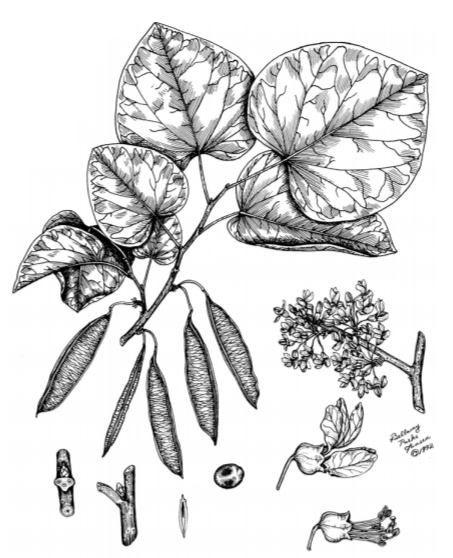
A good example of the importance of genetic diversity to plant and animal populations is agriculture. Agricultural crops are planted in extensive monocultures with little genetic diversity. Historically, agricultural species have been particularly susceptible to disease and insect outbreaks that have ruined harvests because of little or no genetic diversity. More recently, improved pesticides and genetic strains have helped curb this problem.
Species diversity is used to assess or index biodiversity and the diversity of all
organisms (plants and/or animals) in a community, habitat, or ecosystem. Species diversity
can be measured in a number of ways, but is usually calculated as a function of both
the number of species (species richness) and the proportional number of individuals
within each species (abundance or evenness). 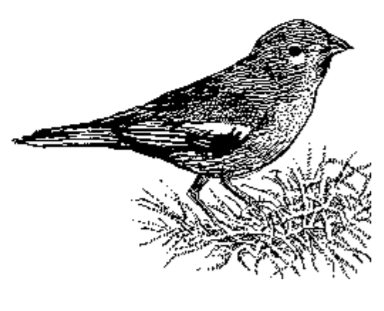 These assemblages tend to be characterized by a few species that are very common and
many species that are rarer. Three primary levels of species diversity have been recognized:
alpha, beta, and gamma. Alpha diversity is the diversity of species in a single habitat
or stand. Beta diversity is diversity between two or more habitats and includes the
species that are added when additional habitats or adjacent stands are sampled. Gamma
diversity is the diversity of species in a large landscape containing many different
habitats or different stands.
These assemblages tend to be characterized by a few species that are very common and
many species that are rarer. Three primary levels of species diversity have been recognized:
alpha, beta, and gamma. Alpha diversity is the diversity of species in a single habitat
or stand. Beta diversity is diversity between two or more habitats and includes the
species that are added when additional habitats or adjacent stands are sampled. Gamma
diversity is the diversity of species in a large landscape containing many different
habitats or different stands.
Community and ecosystem diversity reflect the kinds and amounts of community/ ecosystem types across a defined geographic area. Communities are generally defined as the group of interacting plants or animals in an area. They are usually classified by plant associations such as tallgrass prairie, oak-hickory forest, pine savanna, or cypress swamp with associated wildlife species. In addition to floral and faunal communities, an ecosystem includes the abiotic factors associated with specific communities such as nitrogen cycling, soil moisture, erosion prevention capabilities, or fire interactions. Community and ecosystem diversity is not measured only by presence or absence, but by complex attributes reflective of the configuration and spatial arrangement of land types. These attributes include degree of fragmentation, connectedness, patch shape, edge complexity, and average patch size.
Oklahoma's Diversity
Oklahoma is one of the richest states for biodiversity. There are 12 defined ecoregions (large areas with similar vegetation types, topography, and land use), which ties with Texas for the most of any state. On a percent land basis, Oklahoma has the highest because of its location in the center of the contiguous states. Because of the diversity of ecological systems found here, a great array of floral and faunal species exist. Species diversity within Oklahoma include:
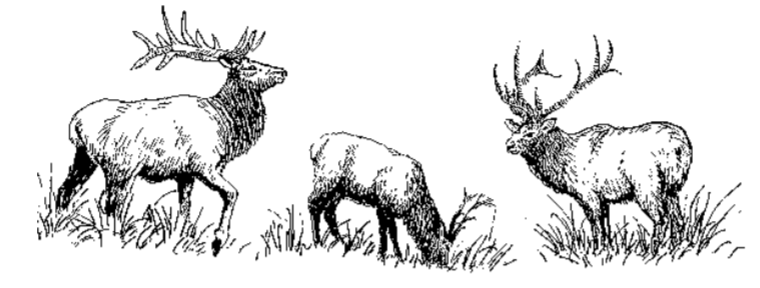 approximately 2,550 species of plants
approximately 2,550 species of plants- 101 mammals
- 182 breeding birds
- 82 reptiles
- 56 amphibians
- 175 fishes
- 201 mollusks
Listing the countless species of fungi, insects, and other invertebrate species present in Oklahoma would be more impressive. Because of the incredible biodiversity in Oklahoma, there is an obligation to make every effort to sustain and enhance the wealth of natural resources in Oklahoma.
Associated Concepts
Scale
Scale is an important issue to remember when dealing with ecosystem management. Ecosystem management plans attempt to sustain high levels of diversity at all scales: genetic, species, community, and ecosystem. Ecosystem management not only increases species richness, but retains representative functioning natural communities.
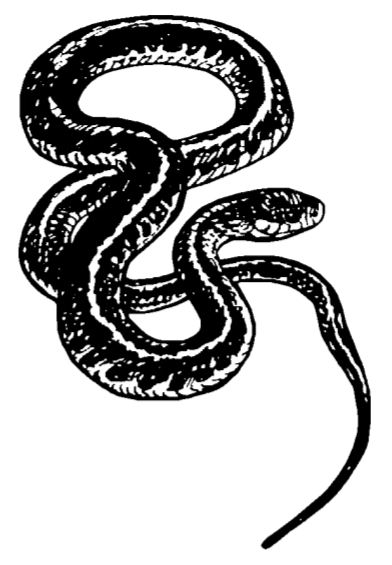 This involves coordinating management efforts on both small and large landscape units.
Take for example, the tallgrass prairie. Because of the enormity of this ecosystem,
any management plan designed to maintain the integrity of this region must be on a
broad scale. The greater prairie chicken (Tympanuchus cupido) is a resident of this
region that warrants special attention because of low numbers. These birds require
highly specialized breeding areas called leks or booming grounds to reproduce successfully.
The prairie chicken is a native component of the ecosystem, and must be retained the
species to maintain biodiversity. This requires coordinated effort across land ownerships.
This involves coordinating management efforts on both small and large landscape units.
Take for example, the tallgrass prairie. Because of the enormity of this ecosystem,
any management plan designed to maintain the integrity of this region must be on a
broad scale. The greater prairie chicken (Tympanuchus cupido) is a resident of this
region that warrants special attention because of low numbers. These birds require
highly specialized breeding areas called leks or booming grounds to reproduce successfully.
The prairie chicken is a native component of the ecosystem, and must be retained the
species to maintain biodiversity. This requires coordinated effort across land ownerships.
In certain situations, small parcels of land may be managed to maintain the integrity of the system. Wetlands provide such an example because they are unique areas that are the sole habitat for many floral and faunal species. However, wetlands did not historically occur on the same scale as tallgrass prairie. Most wetlands are managed on small, individual parcels of land.
Fragmentation
Habitat fragmentation is a landscape concept associated with both biodiversity and ecosystem management. Habitat fragmentation describes the process of breaking large, contiguous areas dominated by one habitat into smaller units comprised of a variety of different habitats. This is a common result of today’s land-use practices and creates a patchwork landscape relatively devoid of large, unbroken tracts of land. Habitat fragmentation results in greater intertwining of habitats and may give a sense of greater biodiversity. More habitats mean greater floral and faunal diversity, but this may not increase biodiversity at landscape level. Maximizing diversity on all areas and all scales may not be necessary to manage for biodiversity. Breaking up large, contiguous habitats reduces community or ecosystem diversity and species diversity. As a patch of habitat decreases in size, the number of different species supported by that habitat also decreases: hence, community strength and resilience decreases. From an ecosystem management perspective, management is needed on large landscape units. The health of a landscape is greatest when genetic, species, and ecosystem diversity are balanced across the landscape.
Certain faunal species require large, unbroken tracts of habitat. For example, forest
interior songbirds benefiting from unbroken, mature forest include many of the warblers,
the scarlet tanager (Piranga rubra), and the ovenbird (Seiurus aurocapillus). These species require large areas of unbroken forest because of the high occurrence of
nest predators and parasites near edges. 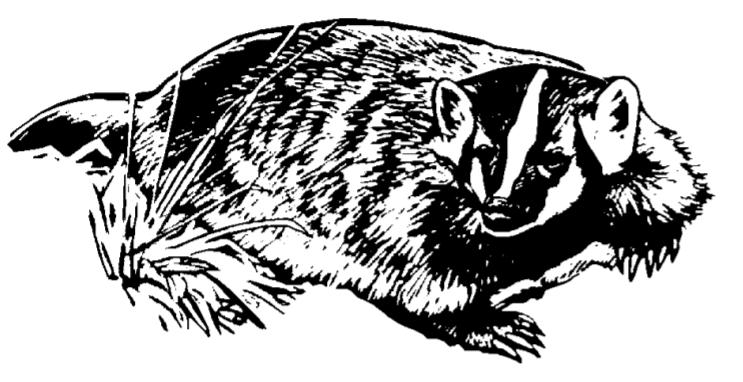 By the same token, the greater prairie chicken is considered by some to be an area-
sensitive species that requires large, unbroken blocks of tallgrass prairie.
By the same token, the greater prairie chicken is considered by some to be an area-
sensitive species that requires large, unbroken blocks of tallgrass prairie.
Another cost of habitat fragmentation is the creation of metapopulations. Populations
of species with low mobility, such as some reptiles and amphibians, can easily become
reproductively isolated through habitat fragmentation. What once was a large interbreeding
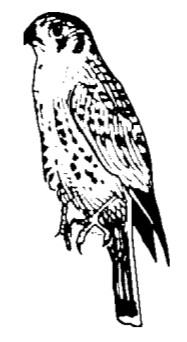 population becomes a group of metapopulations reproductively isolated by distance
or untraversable habitat. These populations may be particularly susceptible to local
extinctions. As isolated populations, they are too small to be very resilient and
thus may be buffeted by disturbances. The Texas horned lizard (Phrynosoma cornutum)
has been adversely affected by habitat fragmentation in Oklahoma. Horned lizards prefer
sandy areas with moderate grass or shrub cover. Croplands and pastures are usually
not suitable habitat because pesticides reduce food (ants) availability, and heavy
grazing by cattle reduces shrubby vegetation used as cover. Because of the prevalence
of agriculture and ranching in Oklahoma, good habitat for horned lizards has been
reduced to isolated patches surrounded by uninhabitable terrain. As a result, horned
lizards in Oklahoma survive primarily on “islands” of suitable habitat.
population becomes a group of metapopulations reproductively isolated by distance
or untraversable habitat. These populations may be particularly susceptible to local
extinctions. As isolated populations, they are too small to be very resilient and
thus may be buffeted by disturbances. The Texas horned lizard (Phrynosoma cornutum)
has been adversely affected by habitat fragmentation in Oklahoma. Horned lizards prefer
sandy areas with moderate grass or shrub cover. Croplands and pastures are usually
not suitable habitat because pesticides reduce food (ants) availability, and heavy
grazing by cattle reduces shrubby vegetation used as cover. Because of the prevalence
of agriculture and ranching in Oklahoma, good habitat for horned lizards has been
reduced to isolated patches surrounded by uninhabitable terrain. As a result, horned
lizards in Oklahoma survive primarily on “islands” of suitable habitat.
Exotics
Free-ranging species living in Oklahoma that are non-native and introduced intentionally or by accident are termed exotics. They can be plants or animals. Introduction of exotic species actually lowers biodiversity. These species can have debilitating effects on individual species or upset ecosystem balance. Because they did not evolve with the ecosystem, they may not experience enough natural mortality to control numbers; and they often out-compete native species.
Exotic plants have become a severe problem in the last century. Exotic plants have the potential to entirely restructure a given community and ecosystem. As a result, the suitability of the system for native plants and wildlife changes for the worse. The ripple effect on a given system can be devastating. Salt cedar and Russian olive are classic examples. The intrusion has been encouraged because of ornamental value for the former and wildlife food benefits for the later. The nature and function of riparian areas has been damaged by these species spreading. Native species of songbirds have been supplanted by common, urban species. Serecia lespedeza, once promoted for wildlife benefits and erosion control, is now the number one invasive problem in Oklahoma.
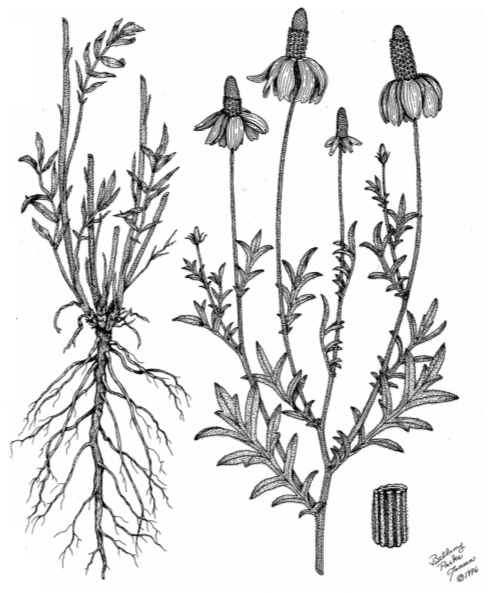
The wild hog is a feral (domesticated animal that has become wild) species or exotic that has become common across Oklahoma. Adults do not have natural predators because of their size and aggressiveness. Humans control the population by hunting. Wild hogs’ methods of foraging (rooting) destroys native vegetation and can alter fragile habitats such as wetlands or riparian areas.
The house sparrow (Passer domesticus) is an exotic passerine introduced from Europe in the 19th century that often invades nests of native birds, especially the bluebird (Sialia sialis) and swallow (Hirundo spp.). Because of their aggressiveness, they can cause numbers of native passerines to decline.
Problems stem from several sources. Long-term consequences of introducing exotic species have not been determined. Researchers and mangers too often search for the “silver bullet,” the one plant or wildlife species that will make everything better. This viewpoint has been promoted by universities, government agencies, private industry, and individuals. Natural resource professionals must take the lead in resisting the impulse to introduce exotic species or even native species outside their native range of habitats. Tables 1 and 2 list common, exotic animal and plant species in Oklahoma.
Insects and disease organisms are becoming increasingly problematic and pose a serious threat to biodiversity. Often these very small but highly virulent organisms may arrive as hitchhikers. For example, chestnut blight completely changed the character of eastern forests and affects chinquapin species in Oklahoma. Oak wilt can spread from nitidulid beetles transported on firewood. Gypsy moths are transported to Oklahoma through egg masses attached to RVs. These organisms can rapidly impact and change ecosystems.
Table 1. Exotic vertebrates in Oklahoma.
| Common Name | Scientific Name |
|---|---|
| Nutria | Myocastor coypus |
| Norway rat | Rattus norvegicus |
| Black rat | Rattus rattus |
| House mouse | Mus musculus |
| Feral hogs | Sus scrofa |
| Domestic cat | Felis catus |
| Domestic dog | Canis familiaris |
| European starling | Sturnus vulgaris |
| House sparrow | Passer domesticus |
| Rock dove (city pigeon) | Columba livia |
| Ring-necked pheasant | Phasianus colchicus |
| Emu | Dromaius novaehollandiae |
| Mediterranean gecko | Hemidactylus turcicus |
Table 2. Exotic Plants in Oklahoma.
| Common Name | Scientific Name |
|---|---|
| Autumn olive | Elaeagnus umbellata |
| Bermuda grass | Cynodon dactylon |
| Curly dock | Rumex crispus |
| Johnsongrass | Sorghum halepense |
| Lambsquarters | Chenopodium album |
| Mimosa | Albizia julibrissin |
| Musk thistle | Carduus nutans |
| Old World bluestems | Bothriochloa spp. |
| Redroot pigweed | Amaranthus retroflexus |
| Russian olive | Elaeagnus angustifolia |
| Russian thistle | Salsola tragus |
| Sericea lespedeza | Lespedeza cuneata |
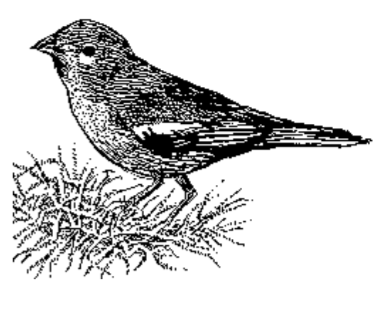 Disturbance
Disturbance
Ecosystem management requires more than just ensuring
that the correct plants and animals are present in an area. It also means that abiotic factors must be considered. Excessive disturbance can alter vegetation structure, composition, and patterns from those that had been present historically. This can take the form of excessive grazing, extensive logging, or any other activity that radically or extensively alters the habitat.
Similarly, reducing or eliminating natural disturbances, such as fire can negatively influence ecosystems. Habitats that have been altered because of modified disturbance practices can have different fire, insect, disease, and hydrologic cycles and processes. In addition, water quality, wildlife habitat, stream flow, and erosion may be affected by altered disturbance patterns. Natural fires may be larger or more severe. Insect or disease outbreaks can last longer or be more frequent. Habitat structure can change dramatically. Eastern redcedar invasion across Oklahoma results from decreases in fire frequency due to fire prevention programs and cultural changes. Urban sprawl and the red cedar problem is also a major threat to maintaining biodiversity across the state. It is critical that natural disturbances be incorporated into ecosystem management efforts to sustain system health.
Standard Management Practices
There are few specific recommendations that can be listed for ecosystem management because each parcel of land contributes differently to the health of the landscape. Management practices that are appropriate in one area may conflict with ecosystem management goals in another. As a result, it is important to consult with a forest stewardship planning team before undertaking plans to improve landscape health. Listed below are a few steps that can be taken to help maintain ecosystem integrity.
- In forests, use native species indigenous to the site and within the historic range for the species.
- On rangelands, favor native over introduced grasses. Native grasses are sustainable.
- Corridors can be created to link isolated patches of habitats. Because many species
lack the
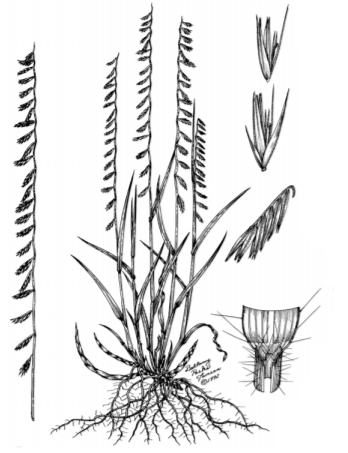 mobility to traverse agricultural or grazing areas, corridors can help link isolated
populations that would otherwise not be able to interbreed. Corridors should not always
be composed of trees. For example, historically all riparian areas in western Oklahoma
were not forested. Planting of trees may actually lower regional biodiversity by promoting
faunal mixing and intrusion of non-indigenous species.
mobility to traverse agricultural or grazing areas, corridors can help link isolated
populations that would otherwise not be able to interbreed. Corridors should not always
be composed of trees. For example, historically all riparian areas in western Oklahoma
were not forested. Planting of trees may actually lower regional biodiversity by promoting
faunal mixing and intrusion of non-indigenous species. - Maintain integrity of large, contiguous habitats. This reduces the creation of island habitats and maintains suitable areas for interior species. One of the greatest threats to ecosystem integrity is the tendency of modern, land-use practices to fragment the landscape.
- Maintain integrity of unique ecological communities embedded in larger, different communities.
- Urban areas undoubtedly have limited habitat for many vertebrate species. However, those species that inhabit urban or suburban areas can be greatly benefited by planting native vegetation rather than exotics. Native plants can improve habitat for many urban species such as butterflies and passerines.
- Areas that have been adversely affected by historic land use can be improved through habitat restoration. Wetlands can be recreated where they have been destroyed. Agricultural fields and pastures can be planted with native prairie grasses and other vegetation.
- Avoid introduction of exotic wildlife and fish species.
- Keep all the parts and processes, including prescribed fire.
 The key to ecosystem management is remembering the big picture and the complex nature
of ecosystems. Each parcel of land contributes to the integrity and health of the
landscape. Economics and landowner objectives are important considerations of any
management plan, but if they can be balanced with landscape goals, everybody wins.
The key to ecosystem management is remembering the big picture and the complex nature
of ecosystems. Each parcel of land contributes to the integrity and health of the
landscape. Economics and landowner objectives are important considerations of any
management plan, but if they can be balanced with landscape goals, everybody wins.
Acknowledgments
Biological Diversity: Status and Trends in the United States, by L. L. Langner and C. H. Flather, USDA General Technical Report RM-244; How We Can Manage for Biodiversity, by T. G. Barnes, University of Kentucky Cooperative Extension Report; Forest Stewardship Notes from Washington State University; Oklahoma’s Biodiversity Plan: A Shared Vision for Conserving our National Heritage, edited by N. L. Murray; Wildlife, Forests, and Forestry by M. L. Hunter, Jr. were used as a basis for some of the material contained in this publication. When available or different, Oklahoma based research information was used. We appreciate the helpful review by Dr. Bill Ross.

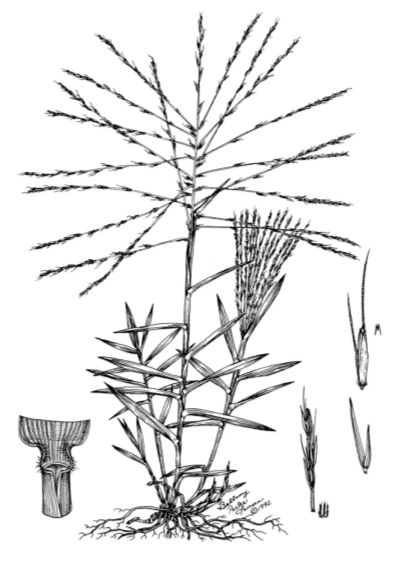
Steve Ditchkoff
Former Associate Wildlife Specialist
Assistant Professor of Wildlife Ecology Auburn University
Ron Masters
Adjunct Associate Professor of Forestry and Director of Research
Tall Timbers Research Station
Kenneth L. Hitch
RREA Extension Assistant
